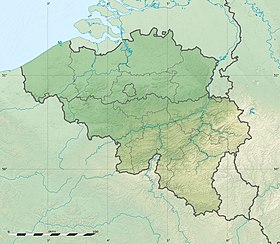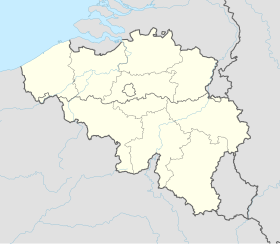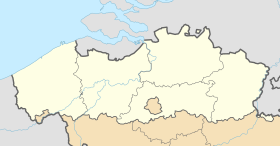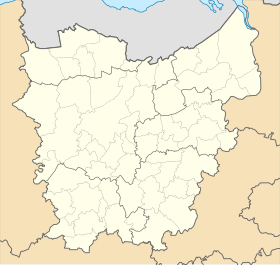Beveren-Kruibeke-Zwijndrecht
Beveren-Kruibeke-Zwijndrecht est une future commune néerlandophone de Belgique située en Région flamande dans la province de Flandre-Orientale qui existera à partir du 1er janvier 2025. Elle est formée par la fusion des communes de Beveren, Kruibeke et Zwijndrecht. La nouvelle commune comptera environ 87.000 habitants.
| Beveren-Kruibeke-Zwijndrecht (nl) Beveren-Kruibeke-Zwijndrecht | |||||
 Héraldique |
|||||
| Administration | |||||
|---|---|---|---|---|---|
| Pays | |||||
| Région | |||||
| Communauté | |||||
| Province | |||||
| Section | Code postal | ||||
| Beveren Haasdonk Melsele Vrasene Calloo Doel Kieldrecht Verrebroek Kruibeke Bazel Rupelmonde Zwijndrecht Burcht |
9120 9120 9120 9120 9120 / 9130 9130 9130 9130 9150 9150 9150 2070 2070 | ||||
| Géographie | |||||
| Coordonnées | 51° 12′ nord, 4° 17′ est | ||||
| Localisation | |||||
| Géolocalisation sur la carte : Belgique
Géolocalisation sur la carte : Belgique
Géolocalisation sur la carte : Région flamande
Géolocalisation sur la carte : Flandre-Orientale
| |||||
| modifier |
|||||
Géographie
modifierSections de la commune
modifier| # | Section | Superf. (km²)[1] |
Habitants (2020)[1] |
Habitants par km² |
Code INS |
|---|---|---|---|---|---|
| 1 | Beveren | 19,14 | 20.859 | 1.090 | 46003A |
| 2 | Vrasene | 14,10 | 4.160 | 295 | 46003B |
| 3 | Verrebroek | 15,97 | 2.042 | 128 | 46003C |
| 4 | Kieldrecht | 19,96 | 4.007 | 201 | 46003D |
| 5 | Doel | 24,59 | 110 | 4 | 46003E |
| 6 | Calloo | 30,17 | 2.491 | 83 | 46003F |
| 7 | Melsele | 18,40 | 11.008 | 598 | 46003G |
| 8 | Haasdonk | 10,35 | 4.362 | 422 | 46003H |
| 9 | Kruibeke | 14,68 | 8.035 | 547 | 46013A |
| 10 | Bazel | 16,95 | 5.686 | 335 | 46013B |
| 11 | Rupelmonde | 1,89 | 3.123 | 1.650 | 46013C |
| 12 | Zwijndrecht | 15,75 | 11.634 | 739 | 11056A |
| 13 | Burcht | 4,49 | 7.520 | 1.675 | 11056B |
Démographie
modifierÉvolution démographique de la commune fusionnée
modifierEn tenant compte des anciennes communes entraînées dans la fusion de communes de 2025, on peut dresser l'évolution suivante :
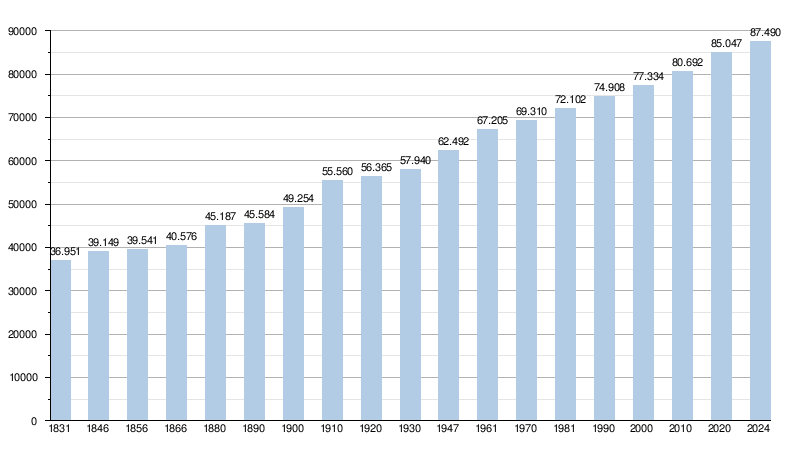
- Source : DGS - Remarque: 1831 jusqu'à 1980=recensement; depuis 1990=nombre d'habitants chaque 1er janvier[2]
Nombre d'habitants de 1992 à nos jours (au 1er janvier)
| Année | Population | Évolution 1992=index 100 |
|---|---|---|
| 1992 | 75.756 | 100,0 |
| 1993 | 76.009 | 100,3 |
| 1994 | 76.203 | 100,6 |
| 1995 | 76.469 | 100,9 |
| 1996 | 76.560 | 101,1 |
| 1997 | 76.908 | 101,5 |
| 1998 | 77.135 | 101,8 |
| 1999 | 77.456 | 102,2 |
| 2000 | 77.334 | 102,1 |
| 2001 | 77.432 | 102,2 |
| 2002 | 77.595 | 102,4 |
| 2003 | 77.822 | 102,7 |
| 2004 | 78.059 | 103,0 |
| 2005 | 78.702 | 103,9 |
| 2006 | 79.152 | 104,5 |
| 2007 | 79.451 | 104,9 |
| 2008 | 79.806 | 105,3 |
| 2009 | 80.206 | 105,9 |
| 2010 | 80.692 | 106,5 |
| 2011 | 81.120 | 107,1 |
| 2012 | 81.423 | 107,5 |
| 2013 | 81.891 | 108,1 |
| 2014 | 82.450 | 108,8 |
| 2015 | 82.780 | 109,3 |
| 2016 | 83.071 | 109,7 |
| 2017 | 83.520 | 110,2 |
| 2018 | 83.851 | 110,7 |
| 2019 | 84.469 | 111,5 |
| 2020 | 85.047 | 112,3 |
| 2021 | 85.110 | 112,3 |
| 2022 | 85.754 | 113,2 |
| 2023 | 86.903 | 114,7 |
| 2024 | 87.490 | 115,5 |
Références
modifier- https://statbel.fgov.be/fr/open-data/population-par-secteur-statistique-10
- https://view.officeapps.live.com/op/view.aspx?src=https%3A%2F%2Fstatbel.fgov.be%2Fsites%2Fdefault%2Ffiles%2Ffiles%2Fdocuments%2Fbevolking%2F5.1%2520Structuur%2520van%2520de%2520bevolking%2FPopulation_par_commune.xlsx&wdOrigin=BROWSELINK
